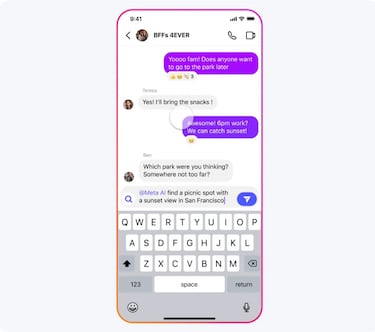What is Meta AI and what is the purpose of this new feature on Facebook?
The race to continue creating assistants based on artificial intelligence to help users continues, and Meta is the next to present what it is working on.

Artificial intelligence seems to be the streaming service of the decade, as it seems every company wants to launch their own. While in recent months we have worked with ChatGPT, Co-Pilot and Gemini (formerly Bard), it is now the turn of META, the company behind Facebook and Instagram, to join the list of companies that see artificial intelligence as the future for users.
What is META AI for?
As we mentioned, Meta AI is META’s artificial intelligence, which in a nutshell is an AI chatbox. This feature is coming to the company’s main apps such as Facebook, Instagram, Messenger, and WhatsApp in the form of a chatbox where you can interact either by asking questions or generating AI images, reaching billions of users in the future.
The main function of this AI, according to its website, is to “get things done and access real-time information without having to leave the app you’re using”. The service is powered by Meta Llama 3, which generates a free virtual assistant to help you with various activities, from “helping you plan dinner based on what’s in your fridge, studying for your test” or generating images faster.

How do I find it?
Related stories
While the chatbot will be integrated into the search and messaging features of Meta’s apps (Facebook, Instagram, WhatsApp, and Messenger), the quickest way to access it is through the meta.ai website. As you can imagine, it may take some time for this feature to appear for everyone, so if you don’t see a thin, blue ring logo, you’ll still have to wait for it to become available. On the other hand, it’s worth noting that within the META apps, this is not found in Messenger Kids.
What countries is META AI currently available in?
The feature is now available to use in the following countries: Australia, Canada, Ghana, Jamaica, Malawi, New Zealand, Nigeria, Pakistan, Singapore, South Africa, Uganda, the U.S., Zambia and Zimbabwe. It is currently only available in English, but as mentioned on its page, “we’re just getting started.”
Complete your personal details to comment